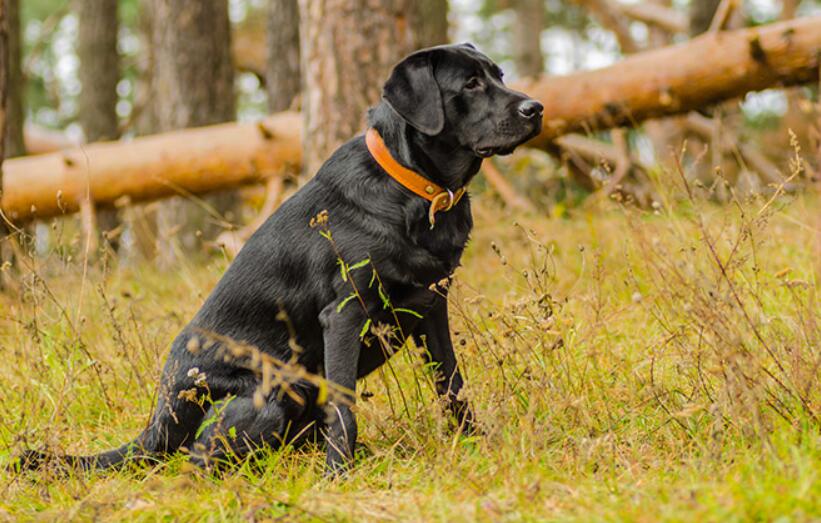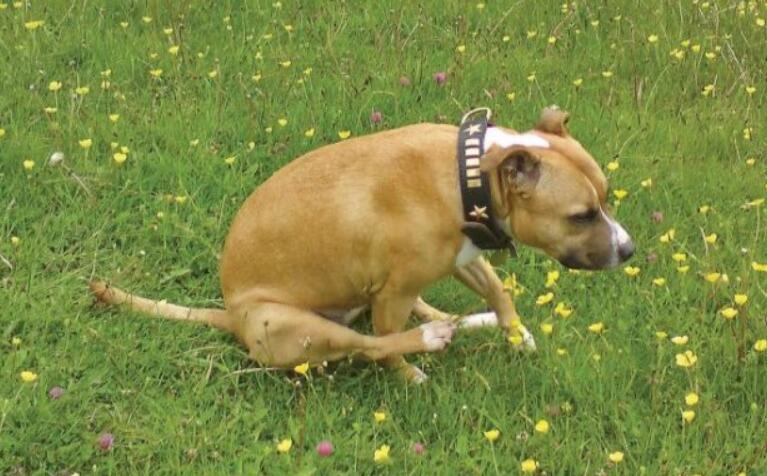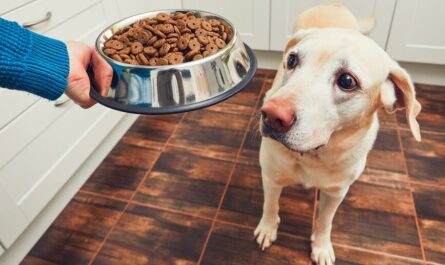Common Causes of Dog Scooting
Scooting is always triggered by irritation, discomfort or itching around the rear end, tail or anal region that your dog is desperately trying to scratch or relieve.
Here are the main culprits vets point to:
1. Allergies
Just like humans, dogs can develop food or environmental allergies that cause annoying itchy skin. The area around the anus and underside of the tail are prime spots for this allergic irritation and inflammation to occur.
Common food allergy triggers include ingredients like beef, dairy, chicken, lamb, eggs, soy and wheat. Environmental causes can include dust mites, grasses, pollen and mold spores.
Allergy testing and an elimination diet trial supervised by your vet can identify the specific triggers unique to your canine companion.
2. Impacted or Infected Anal Glands
Dogs have small sacs called anal glands (one on each side of the anus) that fill up with a putrid liquid that usually expresses tiny amounts each time they poop.
If these glands become overfull and blocked, the backed up material and pressure on the sensitive tissue around the anus can cause significant scooting-inducing discomfort. Infection of the glands can also trigger scooting.
Some dogs are prone to chronic anal gland impaction and require periodic manual expression by a vet or groomer to empty the glands.
3. Parasites
Intestinal parasites like tapeworms, whipworms or hookworms that take up residence in the colon and rectal area are a prime suspect for scooting behavior.
As adult worms migrate and lay eggs around the anus, they generate severe itching and irritation that has dogs scooting in a frenzy.
Giardia protozoa infections can also cause inflammation of the colon and anus. Checking a stool sample is the best way to test for parasites.
4. Injuries, Tumors or Other Disorders
Sometimes scooting can stem from an injury or trauma to the area around the tail or hindquarters. Abscesses, tumors or growths around the rear can also be to blame.
Other issues like a blocked or abscessed anal gland, enlarged prostate, urinary tract infection or fecal impaction can also trigger scooting. Your vet can perform examinations and diagnostic testing to pinpoint the problem.
10 Natural Home Remedies for Dog Scooting
While the cause of scooting needs to be addressed, many at-home remedies can provide relief and treat the source of your dog’s dragging discomfort.
Always monitor your dog closely after implementing home treatments. Seek veterinary advice promptly if symptoms persist or your pet seems in distress.
1. Oatmeal Baths
Bathing your dog with a soak in colloidal oatmeal can significantly calm irritated skin and provide relief from intense itching around the rear. The natural anti-inflammatory and anti-itch properties of oats will gently soothe rashes, hot spots and allergic reactions.
Add a cup of colloidal (finely ground) oatmeal to a cotton bag or old pillowcase. Secure it tightly and put in the tub while filling with warm – not hot – water.
Let your dog soak for 10-15 minutes to allow the soothing oats to penetrate the skin and coat. Rinse thoroughly afterwards. Repeat oatmeal baths as needed until the inflamed area heals.
2. Probiotic Supplements
Oral probiotic supplements can rebalance your dog’s digestive and immune health in multiple ways that combat scooting causes.
Benefits of dog-specific probiotic powders or pills include:
- Strengthening gut barrier function
- Crowding out yeast and bacteria
- Improving digestion and nutrient absorption
- Easing gastrointestinal inflammation
- Supporting healthy immune responses
- Fighting parasites, viruses and allergies
Probiotics help treat parasitic infections, impacted anal glands, diarrhea and allergic reactions. Choose a high-quality canine probiotic and give as directed on the package.
Adding a spoonful of plain, unsweetened yogurt to your dog’s diet aids digestion and gut health too.
3. Pumpkin for Regular Poops
Canned unsweetened pumpkin puree is a great natural home remedy for dog scooting issues. Pumpkin is a rich fiber source that can help firm up loose stools while easing constipation.
Irregular bowel movements that produce very soft, liquidy or overly firm stools can irritate the anal area and induce scooting. Adding a dollop of pumpkin supports healthy digestion and bowel regularity.
Try adding 1-4 tablespoons of canned pumpkin to your dog’s meals. Make sure the label states 100% pumpkin – avoid sugary pie fillings. Frozen pumpkin can also be thawed and used.
4. Apple Cider Vinegar
The healing powers of apple cider vinegar extend to dogs too. When diluted with water, it helps balance pH levels in the body, creates an unfriendly environment for parasites and soothes irritated anal tissue.
To use, mix 1 teaspoon organic ACV per 20 pounds of your dog’s body weight into their drinking water. For example, add 3 teaspoons to the water bowl of a 60 lb pooch.
Improving gut health will deter parasite infections. And acetic acid in ACV reduces anal inflammation and irritation.
5. Coconut Oil
Coconut oil has become a popular supplement for dogs due to the many health benefits it provides. The antimicrobial properties help fight anal gland infections that cause scooting. And the medium-chain fatty acids deeply moisturize dry, flaky skin that leads to itching.
For oral use, give 1/4 teaspoon per 10 pounds of body weight daily. You can simply spoon feed or mix into meals.
Coconut oil can also be applied topically to the irritated area. Allow your dog to lick the oil off their fur as well since ingestion provides benefits too.
6. Hydrotherapy
For dogs with chronic allergies, skin problems or frequent scooting – a session of hydrotherapy can provide tremendous relief. This water therapy involves the dog walking or swimming against controlled water currents in a special pool or tank.
The gentle resistance exercise and massage stimulate circulation to aid healing of irritated tissues. The surrounding water soothes itchy skin and washing removes allergens. Hydrotherapy centers for dogs are popping up across many cities.
7. Epsom Salt Soak
A warm Epsom salt bath can reduce swelling, ease painful hemorrhoids or contracted anal muscles causing constipation discomfort. This mineral-rich soak soothes irritation around the rear.
Add 1-2 cups Epsom salts to a shallow warm bath and let your dog soak for 5-10 minutes. It’s safe if they drink some of the water too. Rinse coat afterwards. Repeat Epsom salt soaks several times a week if needed.
8. Aloe Vera Gel
Pure aloe vera gel from the plant’s leaves can provide cooling relief when applied to irritated anal areas. It’s a powerful natural anti-inflammatory and antimicrobial that can promote healing of rashes, hot spots and abrasions.
After bathing your dog, pat the area dry and apply a thin layer of aloe vera a few times daily. Monitor to ensure your dog does not lick off excessive amounts as ingesting too much could cause diarrhea.
9. Witch Hazel Pads
Witch hazel is an astringent that can reduce swelling and fight bacteria around the anus. It also tightens relaxed tissue. Soak soft cotton pads, gauze or paper towels in undiluted witch hazel and gently wipe the irritated area whenever your dog scoots.
The cooling witch hazel will disinfect and soothe your dog’s tender rear. Just be sure to use unscented alcohol-free witch hazel formulated for pets.
10. Chamomile Tea Bags
The anti-inflammatory properties of chamomile can calm irritated anal tissue and shrink swollen blood vessels. Make a strong batch of chamomile tea, let it cool and soak some gauze pads or cotton balls in the tea. Apply to the affected area several times a day to ease soreness. You can also add cooled chamomile tea to your dog’s bath.




